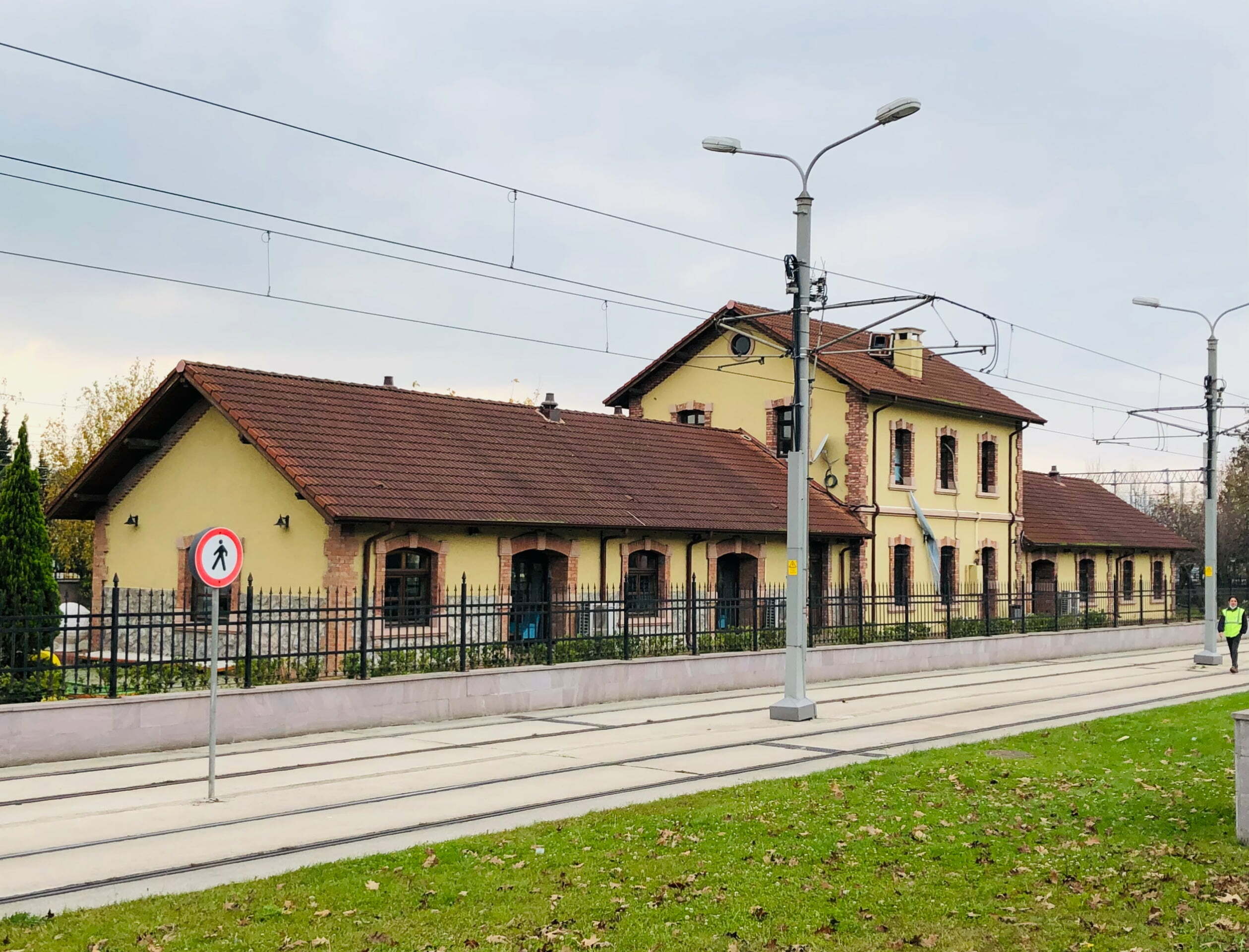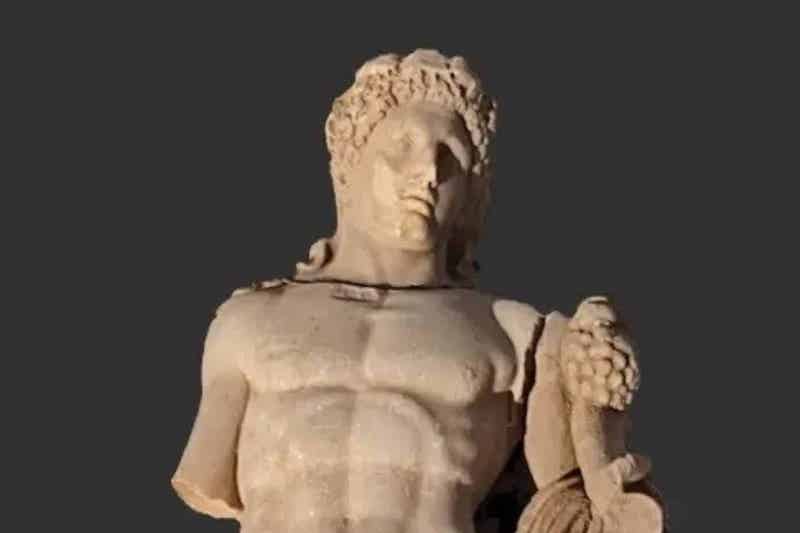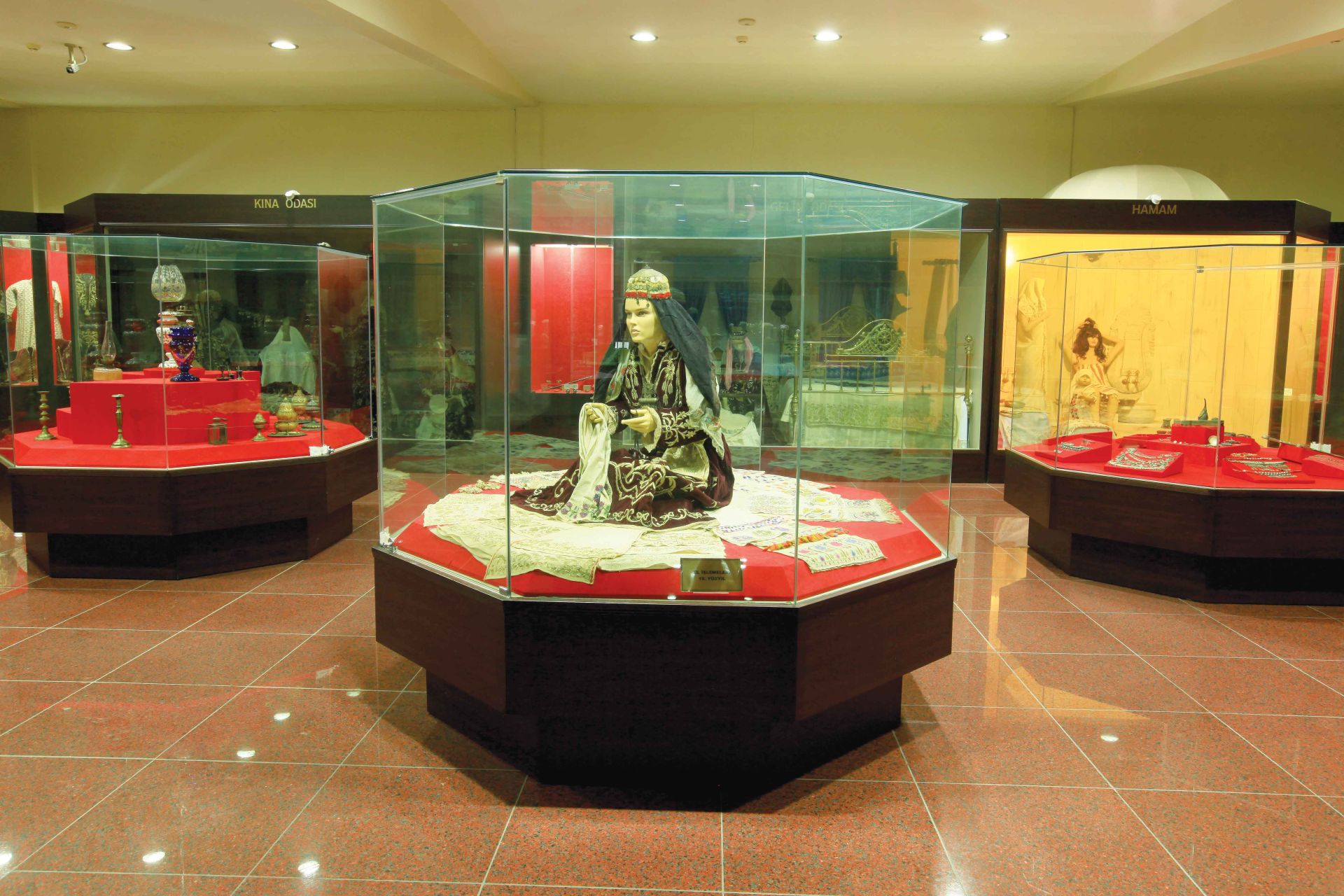When you think of Kocaeli, do industrial facilities, a bustling port, and highways come to mind first? For most of us, that's the case. But what if I told you that right in the heart of the city, inside a historic train station, a time machine is hidden that will take you back thousands of years? This isn't just a cold space displaying artifacts of stone and soil; it's a living history stop, whispering a different story in every corner. In this article, we will explore step-by-step why the list of Things to Do in Kocaeli Archaeology Museum is so special and what awaits you at this historic stop. Fasten your seatbelts, because we are embarking on an incredible journey from the Paleolithic Age to the Ottoman Empire.
Explore the museum located in the historic Izmit Train Station building
Before you even step into the museum, take a moment to stop and look around. The place you are in is no ordinary museum building. This is part of the historic Izmit Train Station complex, designed by German architect Otto Ritter between 1873 and 1910. This historic area, where the whistles of steam trains once echoed and where many important statesmen like Atatürk were welcomed, now hosts entirely different passengers: time travelers. The museum was created by combining restored structures like old Tekel warehouses, and this architectural heritage adds a unique atmosphere to your visit from the very first moment.
This fundamentally changes the experience of visiting the museum. A train station, by its nature, is a symbol of journeys, beginnings, and connecting different places. The Kocaeli Archaeology Museum takes this symbolism to a whole new level. The tracks no longer carry you to different cities, but to different centuries. The building itself is a gateway to the artifacts within, like the departure platform for a train to the past. As you wander through these walls designed by Otto Ritter, it is truly fascinating to feel the architectural traces of the industrial revolution on one side and the remnants of Rome's lost capital on the other.
Before entering the main museum building, you are greeted by what feels like a garden of whispers. This open-air exhibition area is a magnificent herald of what you will see inside. The giant sarcophagi displayed here are works of art that saw off Rome's mighty generals or wealthy merchants on their final journeys. The milestones you'll see along the paths are signs of the ancient highways that connected Nicomedia to other cities of the empire. These stones are not just rock fragments indicating distance; they are the silent witnesses of the roads traveled by legions, merchants, and emperors. In a corner of the garden, Ottoman-era tombstones and cannons greet you with a nod to a more recent past.

Examine artifacts like the Heracles statue unearthed from the ancient city of Nicomedia
When you step through the museum's door, a giant greets you in all its glory: the Weary Heracles. This massive statue is undoubtedly the museum's biggest star, and its story is as impressive as the statue itself. This artifact was not found as a result of a planned excavation but was discovered completely by chance in the rubble of a construction site after the 1999 Marmara Earthquake. The property owners, worried that construction would be halted, unfortunately, tried to throw this priceless historical heritage in the trash. They even cut off the statue's legs to make it fit in the truck. Fortunately, thanks to a tip from a conscientious citizen, this massacre was prevented, and Heracles was delivered to where he belongs: the protective arms of history. Today, this statue, whose head is still missing, is one of only seven of its kind found in the world and is considered one of the largest Heracles statues remaining from the Roman period.
The dramatic discovery story of the Heracles statue whispers a much larger truth to us. Kocaeli's most valuable treasures are not unearthed through large-budget, planned archaeological digs, but through coincidental and often traumatic events like an earthquake or a foundation excavation. This proves that modern Izmit is built directly on top of ancient Nicomedia, one of the four capitals of the Roman Empire. A vast history lies sleeping beneath the city. As the mayor has stated, if the right steps are taken, this place has the potential of an Ephesus. So, as you tour the museum, you are not only witnessing the discovered artifacts but also the enormous potential slumbering beneath the city's feet.
As you move on from the shadow of Heracles and proceed through the halls, you will continue to trace the glorious period when Nicomedia was the capital of Rome. The wealth of the city, which reached its peak during the reign of Emperor Diocletian, is evident in the marble busts. The proud expressions of victorious commanders, the faces of honored athletes, and the city's prominent figures tell you the stories of those days, even after thousands of years. One of the most special collections in the museum is the colored marble reliefs (friezes), which have no other examples in the world. These works, belonging to a structure built for the imperial cult, offer unique clues about the art and belief world of that period. This golden age of Nicomedia shows just how deep Kocaeli's history is. You can check our guide for more information on other Izmit historical sites.

Discover the halls containing Roman, Ottoman, and Ethnographic artifacts
The museum's indoor halls take you on a chronological journey through a time tunnel. Your journey begins 30,000 years ago with the simple but vital stone tools of the Paleolithic people who lived around Kefken. It continues with the elegant ceramics of the Hellenistic period, lamps and glassware that bear witness to Roman daily life, and objects reflecting the religious world of the Byzantine era. Each piece in these showcases is not part of great wars or emperors' lives, but of ordinary people's lives. That lamp perhaps illuminated a family's dinner; that amphora carried precious wines from one end of the Mediterranean to the other. The museum's section dedicated to underwater archaeology and its extensive coin collection, spanning from the Archaic period to the Ottoman era, complete this richness.
Here, I want to give you a very important expert tip. When you research the museum's old name or look at old guidebooks, you might see the phrase Archaeology and Ethnography Museum. However, this is no longer the case. With a new arrangement made in 2022, the museum's entire ethnographic collection—that is, artifacts from the Ottoman period such as clothing, jewelry, and handicrafts—was moved to another venue in Izmit, which was renamed the Atatürk, Redif, and Ethnography Museum. This change was a strategic move that allowed the Archaeology Museum to focus entirely on its own field, namely the world-class archaeological heritage from Nicomedia. Thanks to this, you now have a more focused and in-depth experience dedicated entirely to archaeology here. If you are curious about Ottoman and local cultural artifacts, you should definitely add the Atatürk, Redif, and Ethnography Museum to your visit plan, which is also one of the most important stops on our list of places to visit in Kocaeli.

While You're Here...
When your time travel at the Kocaeli Archaeology Museum ends, you don't have to end your date with history just yet. When you leave the museum, you can chart a Kocaeli History Triangle route for yourself. Your first stop could be the Kasr-ı Hümayun Palace Museum, which reflects the elegance of Sultan Abdülaziz's era and hosted Atatürk's historic press conference. Afterwards, you can head to the Atatürk, Redif, and Ethnography Museum to see the ethnographic artifacts that were moved from this museum. If you've had your fill of history and want to relax and enjoy the Izmit Bay, Seka Park, one of Turkey's largest parks, is waiting for you right next to the museum.
Bibliography
We recommend checking the official website of the T.R. Ministry of Culture and Tourism for the most up-to-date visiting hours, fees, and official announcements. Such information may change seasonally.
Frequently Asked Questions
Question 1: How much is the entrance fee for Kocaeli Archaeology Museum, and is the Müzekart valid?Answer: Entrance fees may vary by season. However, the Müzekart is valid for citizens of the Republic of Turkey at the museum. We recommend visiting the museum's official website for the most current fee information.
Question 2: What is the most important artifact in the museum?Answer: Undoubtedly, the most famous and important artifact in the museum is the giant Heracles (Hercules) statue, which was found by chance after the 1999 earthquake. It attracts great interest due to its rarity, being one of the few examples in the world, and its discovery story.
Question 3: What days is the museum closed?Answer: Like many museums in Turkey, the Kocaeli Archaeology Museum is closed to visitors on Mondays. Keep this in mind when planning your visit.


 English
English Türkçe
Türkçe